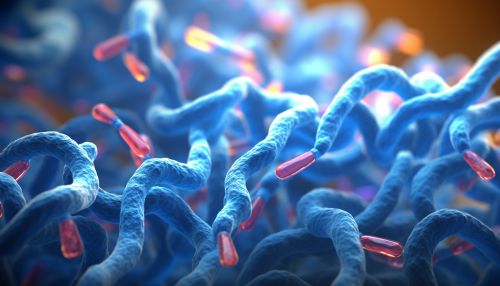Telomeres
Introduction
Telomeres are a region of repetitive nucleotide sequences at each end of a chromosome, which protect the end of the chromosome from deterioration or from fusion with neighboring chromosomes. Their discovery is attributed to the work of Elizabeth H. Blackburn, Carol W. Greider, and Jack W. Szostak, who received the Nobel Prize in Physiology or Medicine in 2009 for their research.


Structure and Function
Telomeres consist of repeated DNA sequences and associated proteins. In humans, the DNA sequence is TTAGGG, repeated approximately 2,500 times. The primary function of telomeres is to prevent the loss of genetic information during DNA replication. They achieve this by providing a buffer zone where DNA sequences can be lost without any impact on the coding DNA sequence of the gene.
Telomere Shortening and Cellular Aging
Each time a cell divides, the telomeres become shorter. When they become too short, the cell can no longer divide and becomes inactive or "senescent" or dies. This process is associated with aging, cancer, and a higher risk of death. The phenomenon of telomere shortening is central to the Hayflick limit, or the theory that a normal human cell can only replicate and divide forty to sixty times before it cannot divide anymore, and will break down by programmed cell death or apoptosis.
Telomerase and Telomere Lengthening
Telomerase, also called telomere terminal transferase, is an enzyme made of protein and RNA subunits that elongates chromosomes by adding TTAGGG sequences to the end of existing chromosomes. Telomerase is active in germ cells and some adult stem cells, but is normally absent from, or at very low levels in, most somatic cells. This is because telomerase activation in somatic cells where it is normally absent can lead to unlimited proliferation, which is a hallmark of cancer.
Telomeres and Disease
Shortened telomeres have been implicated in a wide range of diseases, including many forms of cancer, stroke, vascular dementia, cardiovascular disease, obesity, osteoporosis, and diabetes. Conversely, the activation of telomerase, leading to telomere lengthening, can potentially increase the risk of developing cancer.
Research and Future Directions
Research into telomeres and telomerase has potential implications for aging and cancer treatments. For example, drugs that can lengthen telomeres could potentially slow aging, while drugs that can shorten telomeres could potentially fight cancer.
